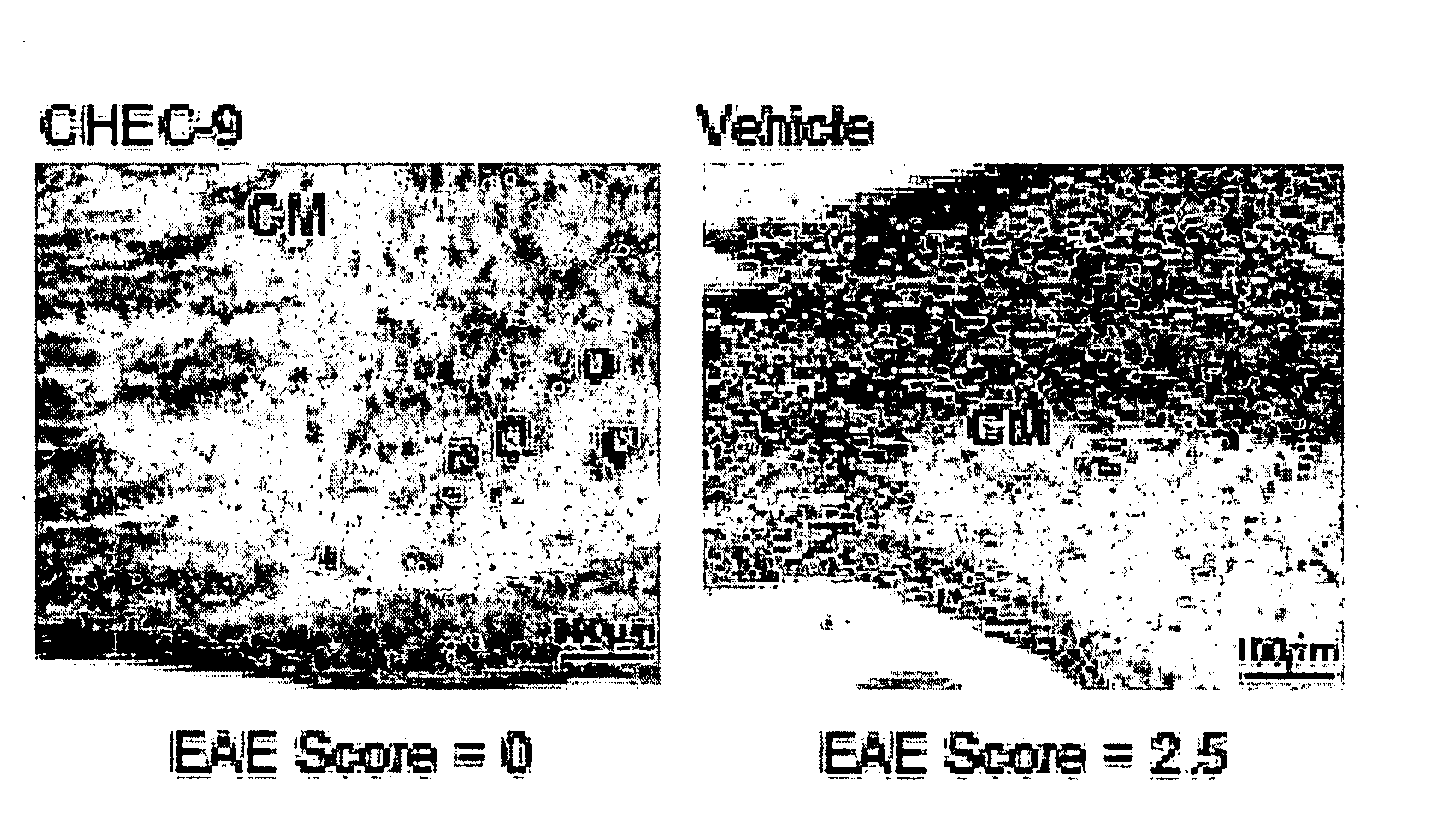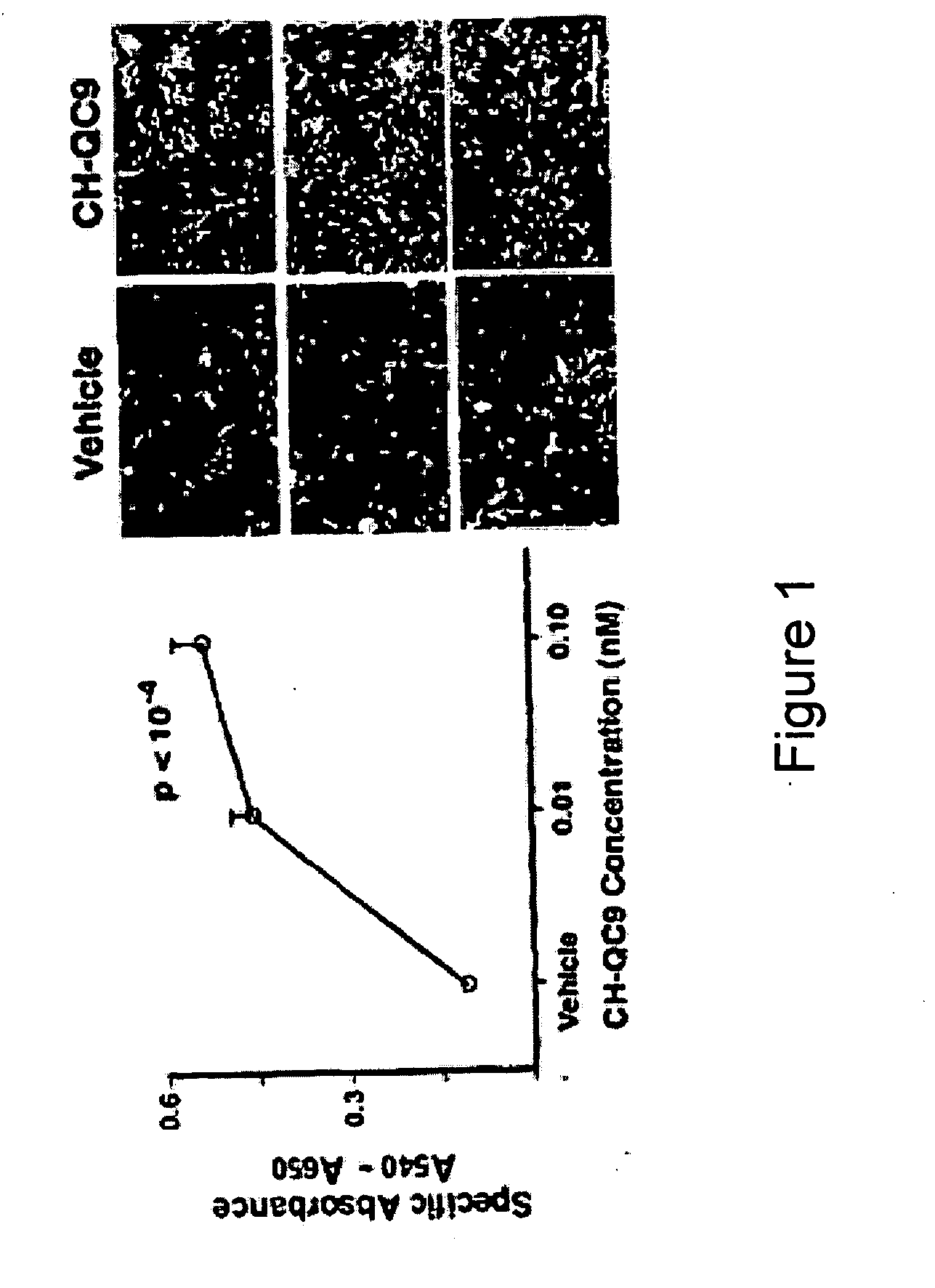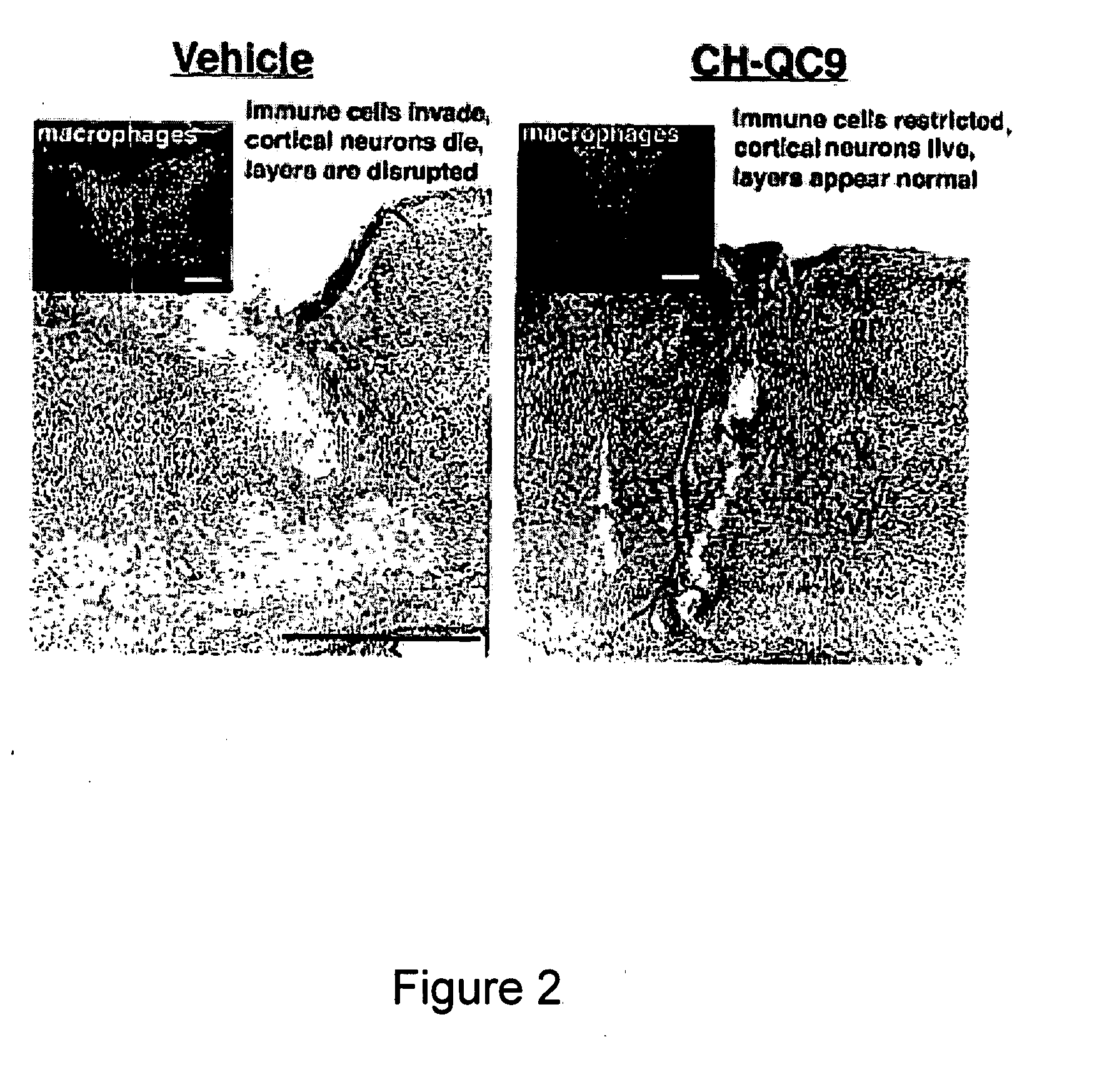CHEC-7 a novel sPLA2 inhibitor and methods of use for treating neurological and inflammatory disorders
a neurodegenerative and inflammatory disorder technology, applied in the direction of immunoglobulins, peptides, drugs against animals/humans, etc., can solve the problems of difficult to determine which neurotrophic factors are effective on a particular neuronal population, and difficult to determine the specificity of endogenous neurotrophic agents. , to achieve the effect of inhibiting the immune response of the brain, promoting neuron survival
- Summary
- Abstract
- Description
- Claims
- Application Information
AI Technical Summary
Benefits of technology
Problems solved by technology
Method used
Image
Examples
experimental examples
[0130]The invention is further described in detail by reference to the following experimental examples. These examples are provided for purposes of illustration only, and are not intended to be limiting unless otherwise specified. Thus, the invention should in no way be construed as being limited to the following examples, but rather, should be construed to encompass any and all variations which become evident as a result of the teaching provided herein.
[0131]The materials and methods employed in the experiments disclosed herein are now described.
example 1
Survival of Neural Cells is Supported by CHEC-9
[0132]A thirty amino acid N-terminal fragment of DSEP called Y-P30, was originally purified from the culture medium of neural cell lines exposed to hydrogen peroxide. Y-P30 promotes neuron survival and inhibits the appearance and differentiation of monocyte derivatives (macrophages / microglia) in vitro and in vivo, including after systemic administration (Cunningham, T J et al., 1998, J. Neurosci. 18:7047-7060; Cunningham, T. J., et al., 2000, Exp. Neurol. 163:457-468). The cDNA and the gene location for full length human DSEP have been identified and encode a 12 kD secreted polypeptide. When the full-length human protein is expressed in either mouse or human neural cells, these cells become resistant to a variety of toxic treatments, including immune cell attack in xenocultures and in vivo (Cunningham T J, et al., in press). Based on the Y-P30 experiments, it was concluded that the survival and immune evasion activities of DSEP could be...
example 2
CHEC-9 is a Potent Phospholipase A2 Inhibitor, and Inhibits Platelet Aggregation
Measurement of PLA2, Platelet Activity.
[0143]Trunk blood was collected from 16 additional Long Evans and Sprague Dawley rats of both sexes following decapitation. Fourteen of these rats were paired according to strain, sex, and weight and injected with a control peptide / vehicle or with CHEC-9 forty-five minutes prior to sacrifice. Phospholipase A2 activity was determined in 10 rats and platelets were isolated from the remaining 6 animals.
[0144]Serum samples and purified bee venom phospholipase were tested for PLA2 activity using a 1,2-bis(heptanoylthio) glycerophosphocholine substrate (Caymen Chemical) which produces a DTNB reactive sulfhydryl upon cleavage of phospholipids at the at the sn-2 position (target of all PLA2 enzymes). DTNB reactivity with serum, peptides, or PLA2 at the concentrations used in these experiments was not detectable in the absence of substrate (or vice versa). This substrate is ...
PUM
| Property | Measurement | Unit |
|---|---|---|
| time | aaaaa | aaaaa |
| time | aaaaa | aaaaa |
| time | aaaaa | aaaaa |
Abstract
Description
Claims
Application Information
 Login to View More
Login to View More - R&D
- Intellectual Property
- Life Sciences
- Materials
- Tech Scout
- Unparalleled Data Quality
- Higher Quality Content
- 60% Fewer Hallucinations
Browse by: Latest US Patents, China's latest patents, Technical Efficacy Thesaurus, Application Domain, Technology Topic, Popular Technical Reports.
© 2025 PatSnap. All rights reserved.Legal|Privacy policy|Modern Slavery Act Transparency Statement|Sitemap|About US| Contact US: help@patsnap.com



